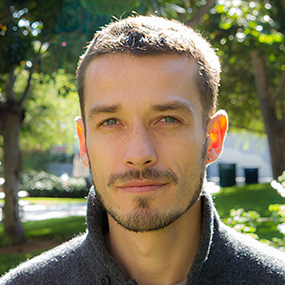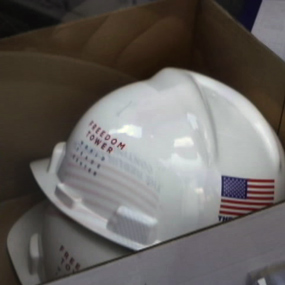Carlos Motta
Carlos Motta’s multidisciplinary work identifies and discusses social, economic, gender- and sexuality-based oppression through the prism of political history, with an emphasis on Latin American identity – his own.
In 2004, Motta was selected to undertake an artist residency in New York, where he now lives. From the studio, on the eighth floor of a building, he could see the main referrent of September 11, 2001: the crater known as Ground Zero. Letter to My Father (Standing by the Fence) is the artist’s reflection on the symbolical aspects of the 9/11 experience as they relate to his personal baggage.
Canal VB: Carlos Motta talks about his participation in the 15th Festival (2005)
Made in 2005 – when the artist took part in the 15th International Electronic Art Festival Videobrasil –, Letter to my Father (Standing by the Fence) is one of Motta’s earliest works, and lays the groundwork for articulating his political and intellectual views with his art production. The video’s title alludes to Franz Kafka’s book Letter to the Father, about a teenager who struggles with accepting his father as an authority figure. In a statement to PLATFORM:VB, Motta wrote: “it was an interesting idea, transforming the State, government, my experience as an immigrant in this country into the father figure, the figure of authority”.
In the video, people passing near the Ground Zero fence give literal descriptions of what they see. In a journalistic tone, they speak of the major economic center and the fact that it has been reduced to tons of rubble. One hears applause as president George W. Bush makes a speech: “here, buildings have fallen. Here, a nation has risen.” The statements are followed by the artist’s own semantically-layered speech explaining the fence’s role as a separator, a divider of territories, a symbol of safety, a sign of property and power. This particular fence signifies “death, damage, political mismanagement, intolerance, and the most egregious consequence of capitalism: greed. (...) It justifies war and the continuation of a quest borne out of pride.” The point of view of the immigrant, external, warns us of the dangers of historicizing the present, of exacerbating nationalism as a response to the attack. The different levels in Carlos Motta’s critique are apprehended by the critic and curator Octavio Zaya, who remarks that the video focuses on the effects of the attack without sensationalizing terror, whose sole consequence would be to “distract and divert attention yet again from the potential causes to these effects,” as if the episode were “isolated, a fortuitous event, devoid of meaning and separated from the political problems that give rise to colonialism, oppression, displacement, racism etc.” Afterwards, the artist reflects on personal issues such as his mother’s health, which was affected by the incident, and the fact that for the first time in his life, he found himself in the condition of Other – whereas back in Colombia he had benefited from “an inherited capitalism that subjugated many to the favor of some,” the artist is now submitted to the identity of immigrant.
At age 36, Carlos Motta has featured in exhibitions at Tate (London, England), the New Museum, the Guggenheim Museum and MoMA PS1 (all in New York, USA), at Museu de Arte del Banco de la República (Bogota, Colombia), and at the Witte de With (Rotterdam, Holland).
Learn more about the artist:


